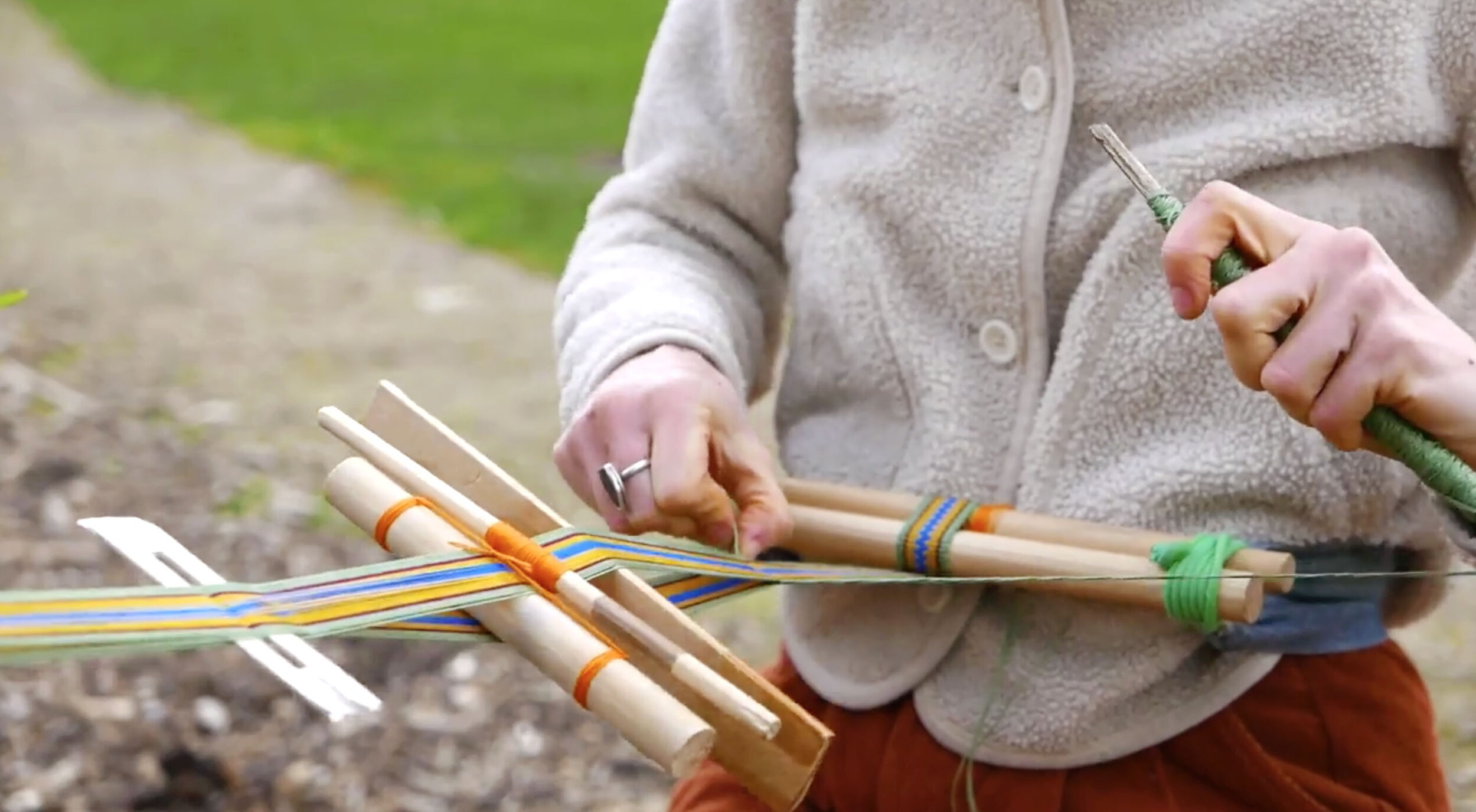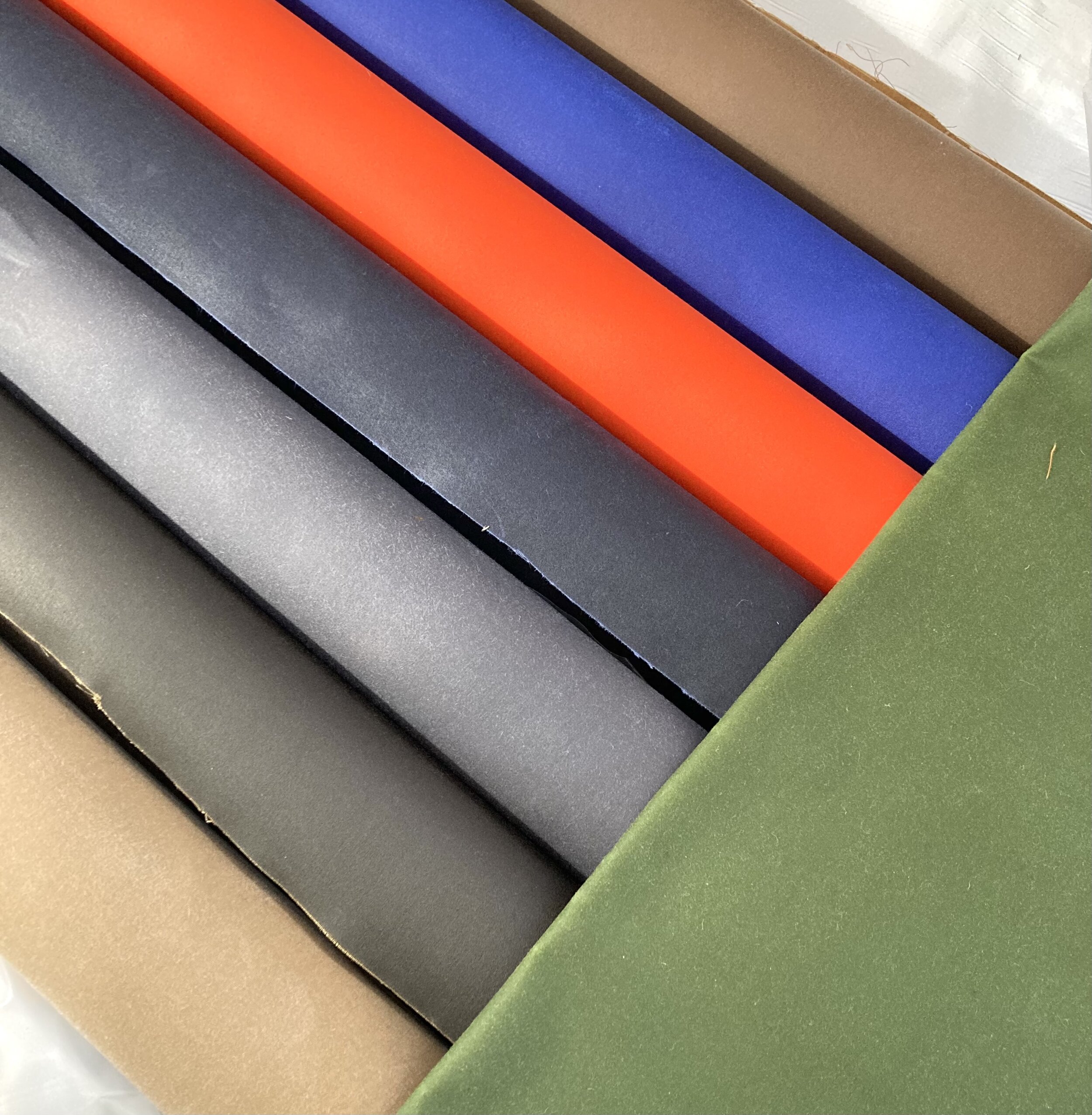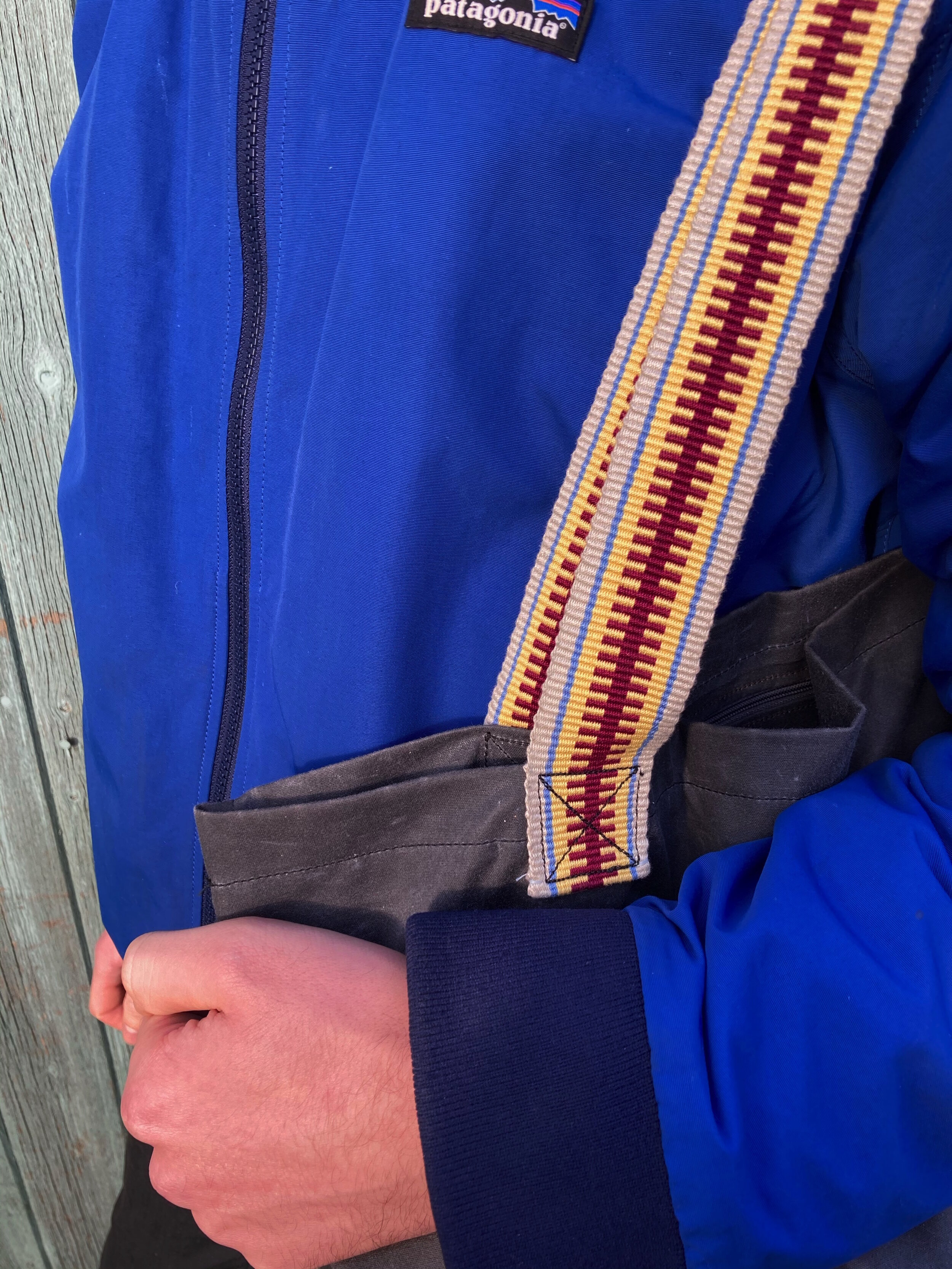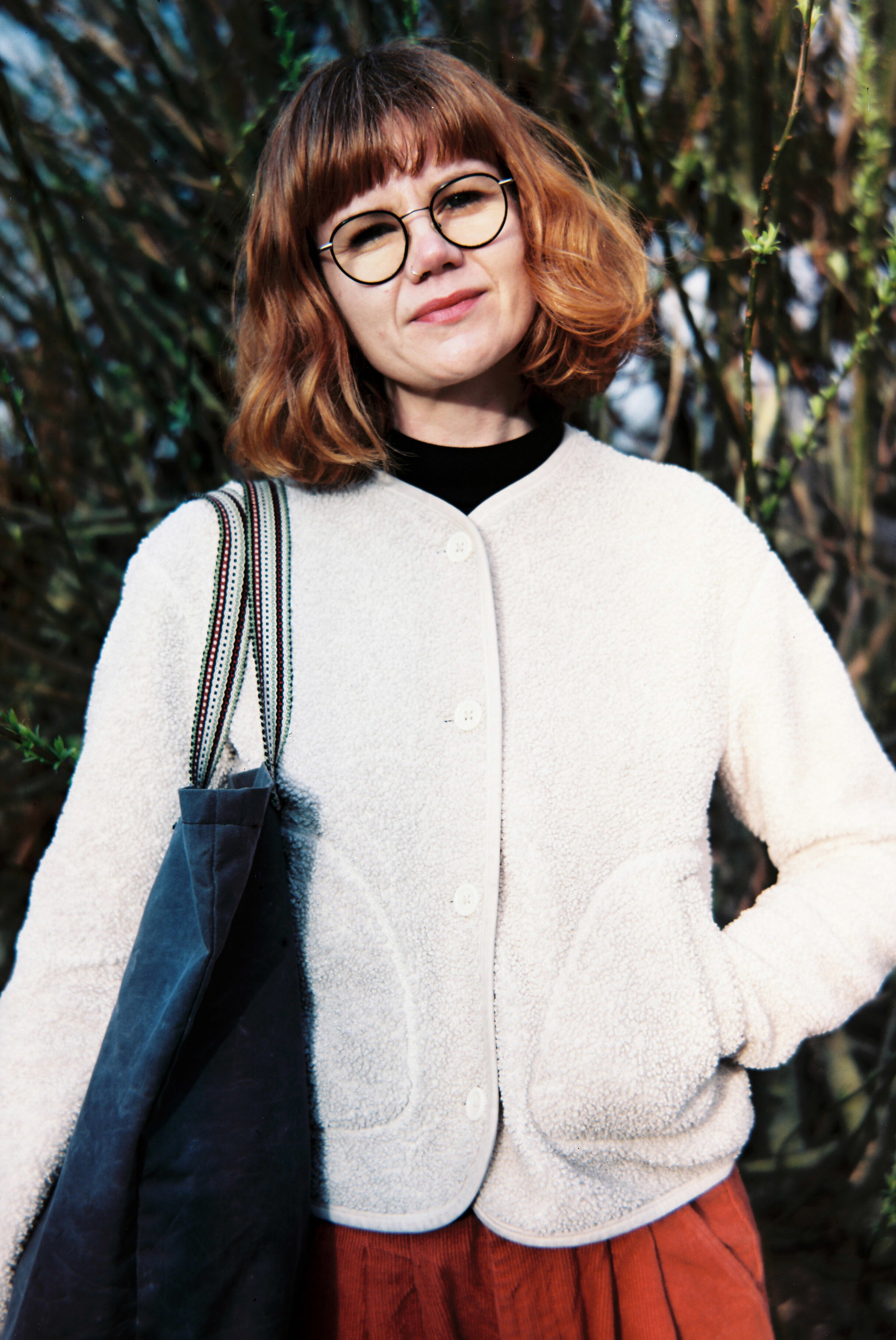
This slow and beautiful craft was almost lost through generations and new technologies. By using Backstrap weaving in my practice alongside workshops, new audiences are introduced to the craft and the communities striving to keep it alive.
Kate O’Farrell
Originally trained in Textiles at Goldsmith’s College, London, Kate is skilled in the indigenous practice of backstrap weaving – a form of pre-loom weaving still practiced in parts of Central and South America, Africa and India.
Kate spent an extended period of time researching and learning backstrap weaving from local practitioners in Mexico and Guatemala, and is now one of the few UK-based backstrap weavers.
Kate now creates bags using UK-made heritage waxed cotton that are water resistant and durable. Then paired with her handwoven straps, these functional items incorporate these beautifully slow processes to create something contemporary, sustainable and friendly to the environment.
“When I arrived in Mexico I knew one word of Spanish, Hola. Soon, I discovered I needed to considerably improve my communication skills! There are hundreds of indigenous groups of weavers based within small and remote communities throughout the region and within most of these groups, Spanish was not the first language. Dating back thousands of years, these tribes aren’t defined by borders, settling across Mexico and Guatemala. Each speaking their native languages, and weaving with patterns and colours specific to their cultural dress. You could know where a person was from based on their ‘traje’ (traditional dress) Creating a map of this vast region that tells the history and traditions dating back to pre-colonial time.
Until recently, this almost-forgotten technique had been in danger of being lost through generational change and new technologies. Consumerism and capitalism grew so that young people didn’t want to learn the laboursome crafts of their ancestors; it became a symbol of poverty and the pressures of keeping up with and meeting the demand of the US the craft and history of the region suffered. But the hard work of women’s co-operatives and small pueblo cultural centres, have fought for government acknowledgement and the traditions of this craft is currently undergoing a resurgence.”










Commission your own bag, made to order in your chosen colours
Also stocked at…



